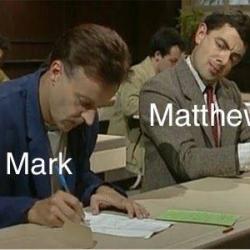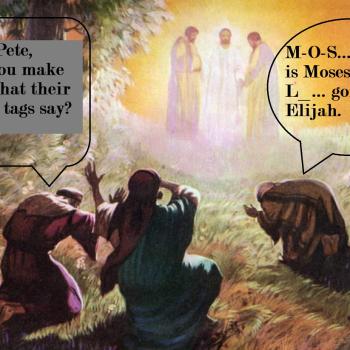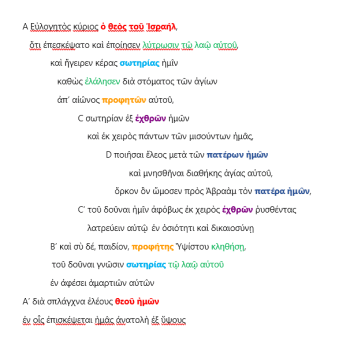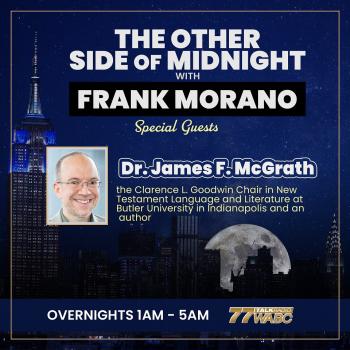I tell students regularly in class that, as a professor of New Testament, I have an advantage over professors with other areas of expertise when it comes to catching cheating and plagiarism. As part of our training, we are exposed to a question about the use of sources and puzzling out the relationship between written texts. If we are honest, in this regard the Gospels are not that different from examples of student work that we have all seen and placed side by side, noticing points of similarity line by line, and wondering how best to explain the relationship, and then what to do about it.
Eric Vanden Eykel recently took this point of overlap between this common professorial experience and used it to good effect to illustrate the Synoptic problem, the question of how the Gospels of Mark, Matthew, and Luke relate to one another. He drew on what I think are actual examples of student work, which I think you will agree present both problems – student dishonesty and Gospel interrelationships – in a clear manner. But how well does this convey an understanding of the Gospels, on the one hand, and how well does it use the Gospels and professorial expertise in source criticism to warn students off cheating and plagiarism? I’ll let you be the judge as you take a look at his slides below.
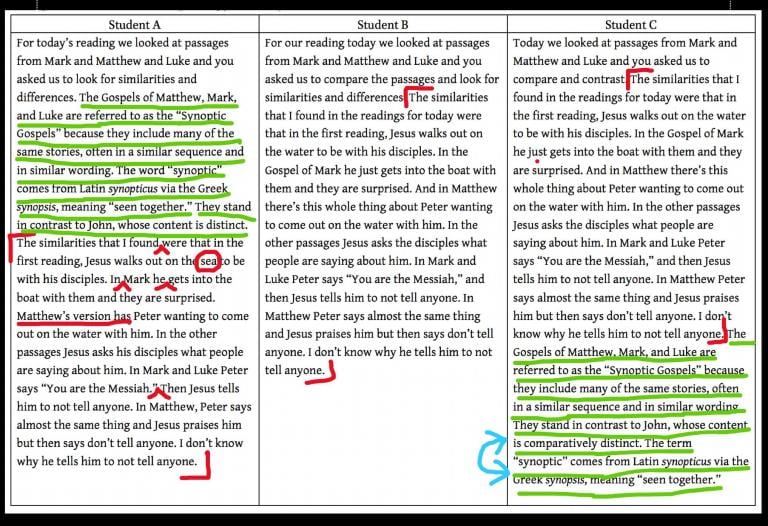
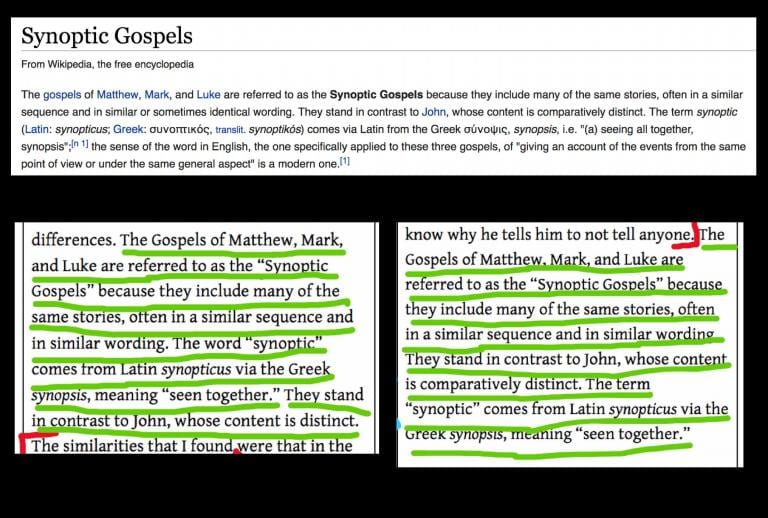
Isn’t this a wonderful illustration?
Since it brings Wikipedia into the picture, I will also mention the image I shared some years ago which outlines the traditional two-source solution to the Synoptic problem, but which substitutes Wikipedia in place of Q.
Related to this, but on a less humorous note, it would be interesting to try this exercise inductively as a test of New Testament methods. Get a bunch of academics together with some student work that overlaps extensively, but in which we don’t think it is simply the case that one student copied from the other. We can then see whether we can reconstruct the common source behind them. After that, we start Googling and see what we find.
Chances are, it would lead us straight to Wikipedia, and/or to other sources. It would be interesting to see whether what we concluded would be one source turned out to be multiple sources, or vice versa. Or if it was all just traceable to Wikipedia, despite detecting stylistic variations.
What do others think? Would this be a worthwhile scholarly experiment?
Whatever the answer to that question, what Eric shared is definitely an excellent illustration of the Synoptic problem for use in the classroom!




